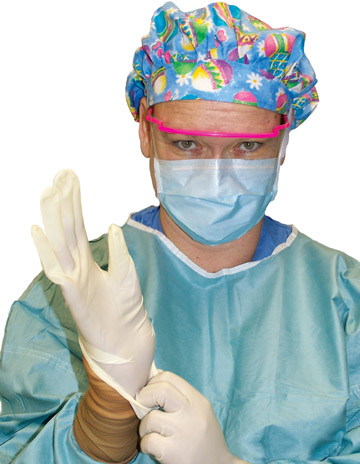From the HIV crisis of the 1980s to the H1N1 pandemic of 2009 to the Ebola outbreak in 2014, Maureen Spencer, MEd, RN, CIC, FAPIC, has seen a lot during her more than 40 years as a board-certified infection preventionist. But she's never seen anything like what we're experiencing with COVID-19. "I semi-retired back in December, and I've been absolutely swamped with questions, concerns and requests for help," says Ms. Spencer, an independent consultant based in Boston.
She's not alone. Guidance from infection prevention experts is in high demand right now as healthcare professionals adapt to a new normal in surgical care. There's a tremendous opportunity to capitalize on the focus infection prevention practices are receiving and use that attention to drive home a critical back-to-basics message that could spark real change in how your staff protect themselves and their patients from infection.
"The SARS outbreak taught us how to [make change happen] correctly," says Ann Marie Pettis, RN, BSN, CIC, FAPIC, president-elect of the Association for the Professionals in Infection Control and Epidemiology (APIC). "Because of the fact that healthcare workers were primarily getting infected as a result of taking off PPE incorrectly, the proper donning and doffing of PPE became the new normal."
Ms. Pettis is already starting to see that sort of messaging growing out of the COVID-19 pandemic, but knows the real work lies ahead. "That's the charge for infection preventionists," says Ms. Pettis. "We need to constantly message, educate, create policies and procedures, audit, get out and interact with staff and conduct one-to-one training."
The good news is that everyone who's been employing proper hand hygiene, skin prepping and surface disinfecting won't second-guess your standardized infection prevention protocols moving forward. "It'll be easier to get the message to stick, even among the staff that are a bit reluctant," says Ms. Pettis.
"This is our chance to get back to basics in infection prevention," says Lee Anne Blackwell, BSN, RN, EMBA, CNOR, CAIP, vice president of clinical services at Practice Partners in Healthcare in Birmingham, Ala. "It's our chance to perform appropriate cleaning and disinfection protocols, and to treat every patient like you don't know what they have."
The result of this back-to-basics approach could very well highlight the invaluable role proper, consistently applied protocols play in keeping patients infection-free. "What I hope to get out of the renewed emphasis on hand hygiene and enhanced environmental cleaning and disinfection is infection prevention best practices that stick around and lead to decreased healthcare-acquired infections and fewer SSIs," says Ms. Spencer.
Of course, there's a danger of returning to the status quo once things finally settle down. "After the H1N1 outbreak, a lot of healthcare professionals went back to their old habits," says Ms. Spencer.
She also fears that infection prevention departments that hired extra staff — additions that finally brought the departments to adequate staffing levels — will be hit with layoffs as soon as the wave of COVID-19 patients subsides. And in high-volume, fast-paced facilities there will always be pressures to cut corners.
.svg?sfvrsn=be606e78_3)

.svg?sfvrsn=56b2f850_5)